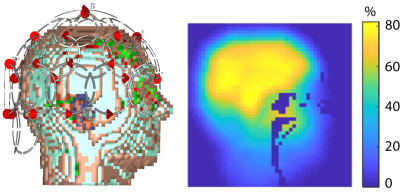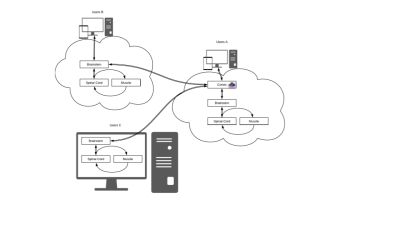2780
A software tool to assess radiofrequency coil designs with respect to ultimate intrinsic performance limits
Eros Montin1, Ioannis P Georgakis1,2, Bei Zhang3, and Riccardo Lattanzi1,4
1Center for Advanced Imaging Innovation and Research (CAI2R) Department of Radiology, New York University Grossman School of Medicine, New York, NY, United States, 2Corsmed, Stockolm, Sweden, 3Advanced Imaging Research Center, UT Southwestern Medical Center, Dallas, TX, United States, 4Vilcek Institute of Graduate Biomedical Sciences, New York University Grossman School of Medicine,, New York, NY, United States
1Center for Advanced Imaging Innovation and Research (CAI2R) Department of Radiology, New York University Grossman School of Medicine, New York, NY, United States, 2Corsmed, Stockolm, Sweden, 3Advanced Imaging Research Center, UT Southwestern Medical Center, Dallas, TX, United States, 4Vilcek Institute of Graduate Biomedical Sciences, New York University Grossman School of Medicine,, New York, NY, United States
Synopsis
This work introduces POIROT (Performance Observer In Receive or Transmit), a web-based tool for the assessment of receive and transmit coil designs against ultimate intrinsic signal-to-noise ratio and transmit efficiency, respectively. It enables engineers, for the first time, to evaluate how good is a design and whether there is further room for improvement before building a prototype. POIROT currently includes ultimate intrinsic data for three numerical head models at different resolutions and magnetic field strengths. POIROT could be integrated with rapid numerical EM modeling tools to develop a pipeline for coil design optimization that uses ultimate performance as the benchmark.
Introduction
Numerical simulations are often used to evaluate the performance of radiofrequency (RF) coil designs before building expensive prototypes. However, even the most expert RF engineer generally cannot tell if a particular design is optimum, but only whether it is good enough with respect to other coil configurations. Ultimate intrinsic (UI) performance metrics 1-6 are absolute design benchmarks that provide an indication of what performance improvements are possible for any given coil design. Here, we introduce POIROT (Performance Observer In Receive or Transmit), a new software tool that takes as the input the simulated electromagnetic (EM) fields for a head coil design and returns two performance maps 7, where each voxel shows the coil’s signal-to-noise ratio (SNR) and transmit efficiency (TXE) as a percentage of the corresponding UISNR 8 and UITXE 6, respectively.Methods
The UISNR and UITXE were calculated for the “Duke”, “Ella”, and “Billie'' numerical head models from the Virtual Family 9 with a volume integral equation EM solver 10, using a numerical EM basis 6 defined on a shell completely surrounding the head models. We repeated the simulations for 2 mm and 5 mm voxel resolutions, and five main magnetic field strengths (1.5T, 3T, 7T, 9.4T, and 10.5T), updating the model electrical properties (conductivity and relative permittivity) for each Larmor frequency. Computations were performed with Matlab (MathWorks, Natick, MA) on an Ubuntu 18.04.5 server (Intel(R) Xeon(R) Gold 6248 CPU @ 2.50 GHz with 80 cores, 754 GB RAM, and an NVIDIA Quadro Volta GV100 GPU). The UI metrics, which need to be calculated only once, were stored in a database for further usage.The workflow of POIROT consists of four phases:
- the EM fields of the coil design are imported;
- SNR and TXE are calculated from such EM fields;
- the voxelized head model used for the coil simulations is aligned with the corresponding one used for the UI calculations;
- Absolute receive and transmit performance maps are calculated.
Graphic User Interface
POIROT has been developed as a tool for Cloud MR (http://cloudmrhub.com), an open-source framework currently in beta testing that provides access to various MRI applications from a web browser 13-15 and runs calculations via Docker containers deployed locally or on the cloud (Figure 3). As for other applications in Cloud MR 13-15, the graphic user interface of POIROT consists of three tabs: “Home”, “Set Up” and “Results”. From the “Home” tab users can manage data and results files. In the “Set Up” tab, they select head model and frequency, upload input EM fields, and fine-tune the alignment between the imported coil data and the UI data. From the “Results'' tab, users can check the status of the computational tasks, visualize the calculated absolute performance maps, analyze them by drawing regions of interest (ROIs), and exports figures and results.Discussion and Conclusion
We introduced POIROT, a web-based software tool for the assessment of coil designs against absolute references. POIROT enables RF engineers, for the first time, to evaluate how good is a design and whether there is further room for improvement before building an actual prototype. By definition, UI metrics assumes only “intrinsic”, or body, noise (for receive) and power dissipation (for transmit), so POIROT can help predicting the effect on absolute coil performance of other types of losses.The current implementation includes UI data only for head models, but we plan to extend the database to other anatomies. We will also add the capability of calculating experimental performance maps 7 using phantoms of known electrical properties by connecting POIROT with MR Optimum 14, another Cloud MR tool for the calculation of SNR from MR rawdata. In the future, POIROT could be integrated with rapid numerical EM modeling tools, such as MARIE 10, to develop a pipeline for coil design optimization that uses prediction of absolute performance as the benchmark.
Acknowledgements
POIROT was developed through the Cloud MR project, which is supported in part by NIH R01 EB024536. This work was performed under the rubric of the Center for Advanced Imaging Innovation and Research (CAI2R, www.cai2r.net), an NIBIB Biomedical Technology Resource Center (NIH P41 EB017183).References
- Ocali O, Atalar E. Ultimate intrinsic signal-to-noise ratio in MRI. Magn Reson Med. 1998 Mar;39(3):462-73. doi: 10.1002/mrm.1910390317.
- Ohliger MA, Grant AK, Sodickson DK. Ultimate intrinsic signal-to-noise ratio for parallel MRI: electromagnetic field considerations. Magn Reson Med. 2003 Nov;50(5):1018-30. doi: 10.1002/mrm.10597. 3)
- Lattanzi R, Sodickson DK, Grant AK, Zhu Y. Electrodynamic constraints on homogeneity and radiofrequency power deposition in multiple coil excitations. Magn Reson Med. 2009 Feb;61(2):315-34. doi: 10.1002/mrm.21782.
- Guérin B, Villena JF, Polimeridis AG, Adalsteinsson E, Daniel L, White JK, Rosen BR, Wald LL. Computation of ultimate SAR amplification factors for radiofrequency hyperthermia in non-uniform body models: impact of frequency and tumour location. Int J Hyperthermia. 2018 Feb;34(1):87-100. doi: 10.1080/02656736.2017.1319077.
- Guérin B, Villena JF, Polimeridis AG, Adalsteinsson E, Daniel L, White JK, Wald LL. The ultimate signal-to-noise ratio in realistic body models. Magn Reson Med. 2017 Nov;78(5):1969-1980. doi: 10.1002/mrm.26564.
- Georgakis IP, Polimeridis AG, Lattanzi R. A formalism to investigate the optimal transmit efficiency in radiofrequency shimming. NMR Biomed. 2020 Nov;33(11):e4383. doi: 10.1002/nbm.4383.
- Lattanzi R, Grant AK, Polimeni JR, Ohliger MA, Wiggins GC, Wald LL, Sodickson DK. Performance evaluation of a 32-element head array with respect to the ultimate intrinsic SNR. NMR Biomed. 2010 Feb;23(2):142-51. doi: 10.1002/nbm.1435.
- Lattanzi R, Wiggins GC, Zhang B, Duan Q, Brown R, Sodickson DK. Approaching ultimate intrinsic signal-to-noise ratio with loop and dipole antennas. Magn Reson Med. 2018 Mar;79(3):1789-1803. doi: 10.1002/mrm.26803.
- Christ A, Kainz W, Hahn EG, Honegger K, Zefferer M, Neufeld E, Rascher W, Janka R, Bautz W, Chen J, Kiefer B, Schmitt P, Hollenbach HP, Shen J, Oberle M, Szczerba D, Kam A, Guag JW, Kuster N. The Virtual Family--development of surface-based anatomical models of two adults and two children for dosimetric simulations. Phys Med Biol. 2010 Jan 21;55(2):N23-38. doi: 10.1088/0031-9155/55/2/N01.
- Jorge Fernandez Villena, Athanasios G. Polimeridis, Lawrence L. Wald, Elfar Adalsteinsson, Jacob K. White and Luca Daniel. MARIE a MATLAB-based open source software for the fast electromagnetic analysis of MRI systems. 23th Scientific Meeting of the International Society for Magnetic Resonance in Medicine (ISMRM). 30 May - 5June 2015; p. 709.
- I. P. Georgakis, I. I. Giannakopoulos, M. S. Litsarev and A. G. Polimeridis, "A Fast Volume Integral Equation Solver With Linear Basis Functions for the Accurate Computation of EM Fields in MRI," in IEEE Transactions on Antennas and Propagation. July 2021; vol. 69, no. 7, pp. 4020-4032
- Montin, E., Belfatto, A., Bologna, M., Meroni, S., Cavatorta, C., Pecori, E., Diletto, B., Massimino, M., Oprandi, M. C., Poggi, G., Arrigoni, F., Peruzzo, D., Pignoli, E., Gandola, L., Cerveri, P., & Mainardi, L. A multi-metric registration strategy for the alignment of longitudinal brain images in pediatric oncology. Medical and Biological Engineering and Computing. 2020
- Zhang B, Adriany G, Delabarre L, Radder J, Lagore R, Rutt B, Yang QX, Ugurbil K and Lattanzi R, Effect of radiofrequency shield diameter on signal-to-noise ratio at ultra-high field MRI; Magnetic Resonance in Medicine. 2021; vol 85(6) p. 3522-3530.
- Montin E, Wiggins R, Block KT and Lattanzi R, MR Optimum – A web-based application for signal-to-noise ratio evaluation; 27th Scientific Meeting of the International Society for Magnetic Resonance in Medicine (ISMRM). Montreal (Canada), 11-16 May. 2019, p. 4617.
- Montin E, Carluccio G, Collins C and Lattanzi R, CAMRIE – Cloud-Accessible MRI Emulator; 28th Scientific Meeting of the International Society for Magnetic Resonance in Medicine (ISMRM). Virtual Conference, 08-14 August 2020, p. 1037.
- Montin R, Carluccio G and Lattanzi R, A web-accessible tool for rapid analytical simulations of MR coils via cloud computing; 29th Scientific Meeting of the International Society for Magnetic Resonance in Medicine (ISMRM). Virtual Conference, 15-20 May 2021, p. 3756.
Figures

An absolute coil performance map (right)
showing at each voxel the SNR of a 10.5 Tesla 32-channel receive array (left)
as a percentage of the ultimate intrinsic SNR. The coil was designed and
optimized in CST Microwave Studio.
The electric and magnetic fields of each coil were exported, loaded into POIROT
and used to calculate the array’s SNR that was compared with the
corresponding theoretical optimum. The performance map shows that the array can
capture 70-80% of the SNR available in the brain region.

Absolute transmit
performance of finite arrays with an increasing number of elements encircling
the “Duke” realistic head model at different main magnetic field strengths. Each
map displays transmit efficiency as a percentage of the corresponding ultimate
intrinsic transmit efficiency at each voxel of the central sagittal plane. Absolute
transmit performance becomes higher over a broader central region when the
number of transmit coils increases. The comparison between 1.5 T and 7 T
suggests that more coils are needed to approach the optimum at higher field
strength.

Like all other Cloud MR
applications, POIROT provides three user modalities: 1) User A requests
simulations through the Cloud MR webpage and runs them on a dedicated AWS
account; 2) User B runs the simulations from the Cloud MR webpage using her/his
own cloud computing account; 3) User C runs simulations on a local computer
using a dockerized version of POIROT. Users B and C can synchronize the results
in Cloud MR database using restful API’s. All types of users can display
results from the “Results” tab of POIROT’s web graphic user interface or
download them in standard formats.
DOI: https://doi.org/10.58530/2022/2780